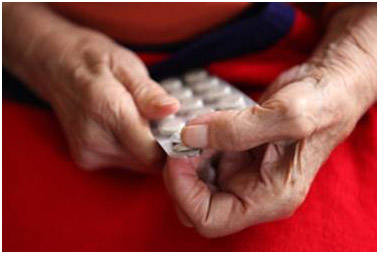 May 29, 2014 — For seniors over the age of 65, taking a daily supplement of vitamin D with calcium — but not vitamin D alone — can offer some protection against the risk of common bone fractures, according to an updated review from The Cochrane Library.
May 29, 2014 — For seniors over the age of 65, taking a daily supplement of vitamin D with calcium — but not vitamin D alone — can offer some protection against the risk of common bone fractures, according to an updated review from The Cochrane Library.
Broken bones of the hip, wrist, or spine due to osteoporosis or low bone mass affect about 52 million Americans, according to the National Osteoporosis Foundation. About one in two women and one in four men age 50 and older will break a bone due to their declining bone health.
Vitamin D has been proven essential for maintaining strong bone health. As people age, they tend to get less vitamin D from natural sources such as sunlight or foods such as fish and milk. Supplements are often needed to restore the body’s optimal levels.
Cochrane reviewers evaluated 53 studies with 91,791 participants to determine whether supplements with vitamin D alone or vitamin D supplements with additional calcium offered the best protection against fractures. Seniors were given either vitamin Dsupplements, including D2 and D3; vitamin D with calcium; or a placebo.
The reviewers, led by Alison Avenell, M.D. at the University of Aberdeen in Aberdeen UK, concluded that in the doses and formulations that were tested in the included trials, supplements of vitamin D alone are unlikely to lower the risk of hip fractures for older people.
“We did not expect to find an effect from vitamin D alone, as this has been a consistent finding from previous reviews,” Avenell said.
Supplements of vitamin D with calcium did, however, reduce the risk of hip fractures in nine of the studies. Among low-risk seniors who live in the community, those who consumed vitamin D with calcium had one less hip fracture per 1,000 older adults per year. For seniors living in high-risk environments of nursing homes and hospitals, there were nine less hip fractures per 1,000 older adults per year.
Avenell said the review supports the recommendation that at risk older women and men take vitamin D supplements with calcium. Noting however, that people, particularly those with kidney stones, kidney disease, high blood calcium levels, gastrointestinal disease or who are at risk for heart disease, should seek medical device before taking supplements.
“I would only suggest calcium and vitamin D for fracture prophylaxis in very high risk populations, such as much older people in institutions such as nursing homes, who get no sunlight exposure at all. Even then, the risk of side effects may outweigh any preventive effect. I would not suggest vitamin D alone.”
Robert Heaney, M.D, of the Creighton University Osteoporosis Research Center, agreed.
“Most individuals in Europe and North America are deficient in both calcium and vitamin D,” he said. “Giving one or the other, by itself, will help only those who have the single deficiency, not the double deficiency.”
It therefore makes sense that giving both is more likely to produce benefit than giving one or the other or nothing at all, he added.
Source: Health Behavior News Service







